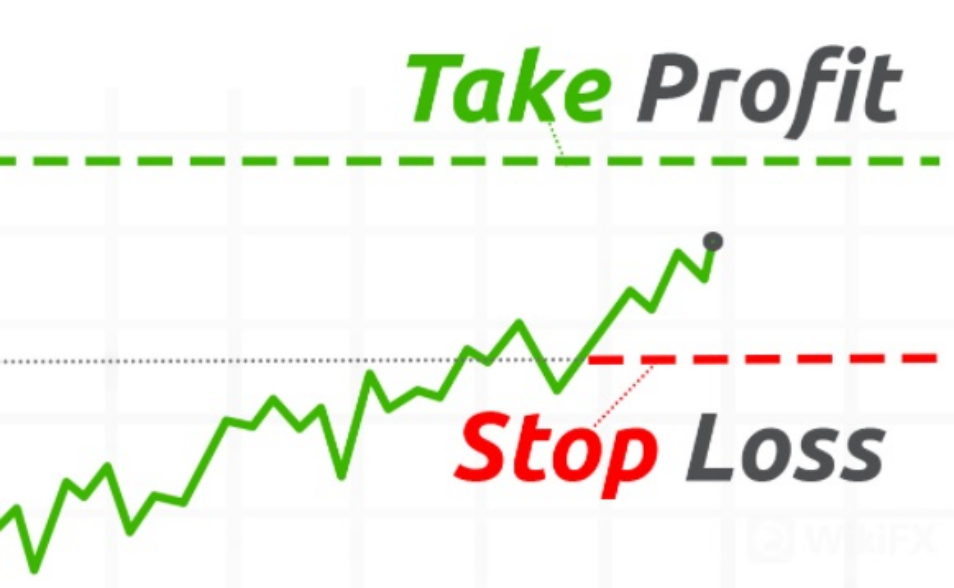Penki rizikos valdymo patarimai investuojant ir prekiaujant akcijomis
Pagrindiniai mokymosi tikslai:
Įvadas: This section unfolds crucial risk management tips to guide your trading and investment journey. By setting clear goals, mastering trading tools, diversifying, staying updated with market trends, and embracing continuous learning, you arm yourself with a robust risk management arsenal.
- Set Concrete Trading Goals: Recognize the importance of having specific objectives to drive your trading strategy and decisions.
- Master Trading Tools: Learn about stop-loss ir take-profit levels, and why they’re invaluable in protecting investments.
- Diversification in Trading: Understand the need for a varied portfolio even within stock trading to guard against market fluctuations.
- Stay Updated with Market News: Realize the impact of external factors on stock prices and the importance of being informed.
- Embrace Continuous Learning: Grasp why updating your knowledge in the ever-evolving stock trading world is essential for success.

Paveikslas: Mid-adult man intently checking financial information on his smartphone. The image portrays the modern approach to monitoring investments and trading stocks using mobile technology.
Šaltinis: iStockPhoto
15.1 Set Clear Trading Objectives
Before you begin trading, set clear and specific objectives. Are you looking for short-term profits or long-term growth? How much risk can you afford to take on? How much loss can you sustain before you need to exit your positions? Clear objectives will guide your trading decisions and help you build a strategy that aligns with your financial goals and risk tolerance.
Why it’s useful: Setting clear trading objectives helps you stay focused on what you aim to achieve, making it less likely for you to be swayed by market noise or emotional impulses. It can also help you determine when to cut losses or take profits, helping manage potential risks.
15.2 Employ Stop-Loss and Take-Profit Levels
Stop-loss ir take-profit levels are pre-set prices at which you plan to sell a security. A stop-loss order is designed to limit an investor’s loss on a security position, while a take-profit order allows an investor to close a position automatically once certain profits have been made.
Why it’s useful: These tools can help manage risk by automatically triggering a sell order when the price reaches a certain level. This can be particularly useful in volatile markets where prices can change rapidly, allowing you to protect profits and limit losses.

Figure title: Visual Explanation of Take Profit and Stop Loss Orders
Šaltinis: TrailingCrypto
Aprašymas: This image illustrates the concepts of ‘Take Profit’ and ‘Stop Loss’ orders in trading. While a ‘Take Profit’ order is an instruction to sell an asset when it reaches a favorable price higher than its purchase price, the ‘Stop Loss’ order acts as a safeguard, signaling a sell if the asset dips to a specified threshold to prevent further losses.
Svarbiausios išvados:
- Take Profit Order: Sets the upper limit, letting traders lock in profits when the asset reaches a desired higher price.
- Stop Loss Order: Acts as a safety net, marking the maximum amount a trader is willing to lose, prompting a sale when the price drops to that level.
- Rizikos valdymas: Both these tools are essential for managing and mitigating risks in trading.
- Automated Execution: Once set, these orders automatically execute trades when the specified conditions are met.
Paraiška: Understanding and effectively using ‘Take Profit’ and ‘Stop Loss’ orders can be fundamental for traders. These tools not only allow for emotion-free, disciplined trading but also aid in executing strategies that align with one’s risk tolerance and investment goals. For budding investors, mastering these tools can be the key to preserving capital and securing profits in volatile markets.

Figure title: Understanding Take Profit and Stop Loss Mechanisms
Šaltinis: TrailingCrypto
Aprašymas: This depiction breaks down the mechanics behind ‘Take Profit’ and ‘Stop Loss’ orders. The ‘Take Profit’ order designates an exit point at a set price above the purchase price, ensuring profits are realized. On the flip side, the ‘Stop Loss’ order sets a price point below the acquisition price, ensuring losses do not exceed a pre-determined limit.
Svarbiausios išvados:
- Take Profit: An automated selling point that is triggered once an asset reaches or exceeds a designated beneficial price.
- Stop Loss: An order placed to sell an asset at a specified price, thus limiting the loss on a position.
- Strategic Trading: These orders, when combined, allow traders to set a potential profit point and a buffer against significant loss.
- Objective Decision Making: By setting these orders, traders can make decisions without the influence of emotions, ensuring a logical trading approach.
Paraiška: For those delving into trading and investments, ‘Take Profit’ and ‘Stop Loss’ are crucial tools. They offer a strategic approach to navigate the inherent uncertainties of the market. By understanding and implementing these mechanisms, traders can protect their investments and optimize potential returns, especially in volatile trading environments.
15.3 Maintain a Balanced Portfolio
Maintaining a balanced portfolio means ensuring that your investments are spread across different types of assets and sectors. This diversification can reduce the risk of significant losses if one area of the market underperforms.
Why it’s useful: Diversification reduces the impact of any single investment’s performance on your overall portfolio. It helps ensure that potential gains in one investment can offset losses in another, thus reducing overall portfolio volatility.

Figure title: The Power of Portfolio Diversification
Šaltinis: Ištikimybė
Aprašymas: This visual representation emphasizes the significance of diversifying investments within a portfolio. By illustrating how various asset allocations influence returns, it becomes clear that spreading investments across different asset types can not only optimize potential returns but also manage risk.
Svarbiausios išvados:
- Rizikos valdymas: Diversification helps in reducing the risk associated with a single asset or a group of assets.
- Optimized Returns: A diversified portfolio can capture returns from different market sectors, allowing for steadier growth.
- Asset Allocation: The allocation mix, such as stocks, bonds, real estate, and commodities, plays a crucial role in determining the risk and return profile of a portfolio.
- Long-term Strategy: Diversification is not just a short-term tactic but a long-term strategy to navigate various market cycles.
Paraiška: For investors aiming to build a resilient portfolio, understanding diversification is pivotal. By allocating investments across a variety of assets, one can potentially mitigate adverse market shifts. This means even if one asset class underperforms, others might compensate, ensuring a balanced growth trajectory for the portfolio.
15.4 Regularly Monitor Market Trends and News
Keeping a close eye on market trends and news can provide crucial insights into factors that may affect stock prices. This can include anything from economic indicators and company earnings reports to geopolitical events and regulatory changes.
Why it’s useful: Regularly monitoring market trends and news can help you make informed trading decisions. It can provide early warnings of potential risks or opportunities, allowing you to adjust your trading strategy accordingly.

Figure title: The Impact of Market News on Investment Decisions
Šaltinis: Wall Street Zen
Aprašymas: The visual underscores the pivotal role that timely market news and emerging trends play in influencing investment decisions. It highlights the interplay between global events, industry-specific news, and stock market reactions, emphasizing the need for investors to stay updated.
Svarbiausios išvados:
- Informed Decision Making: Access to recent market news allows investors to make data-driven choices.
- Understanding Market Volatility: Real-time news helps interpret sudden market movements and volatility.
- Anticipating Trends: Keeping an eye on global events and industry updates can give insights into potential future market directions.
- Risk Management: Being in the loop with the latest news can aid in identifying potential risks early on.
Paraiška: For both new and seasoned investors, staying updated with market news is crucial. This ensures they aren’t caught off-guard by sudden market shifts. Additionally, it helps in identifying investment opportunities and risks in real-time, allowing for timely interventions and strategic moves. Investing without understanding the current market news can be like sailing a ship without a compass.
15.5 Continuously Educate Yourself
Investing and trading in stocks is a continually evolving field, with new strategies, tools, and regulations emerging all the time. Continuous education – whether through reading, courses, webinars, or mentorships – can help you stay up-to-date and adapt to these changes.
Why it’s useful: Continuous learning can help you become a more proficient and versatile trader. The more you understand about the stock market and trading strategies, the better equipped you will be to manage risk and seize opportunities. It also empowers you to understand the rationale behind your trading decisions, which can lead to more disciplined and confident trading.
Svarbiausios išvados:
Baigiamasis pareiškimas: As you venture into the stock market, having a sturdy risk management framework is indispensable. This section equips you with actionable tips to navigate market uncertainties, ensuring a resilient trading and investment portfolio.
- Begin trading with clear objectives to define your strategy and risk boundaries.
- Utilize tools like stop-loss and take-profit levels to manage risk by setting predetermined sell points.
- Diversifikacija in trading minimizes the hit from underperforming market areas.
- Keeping a pulse on market trends and news allows proactive adjustments to your trading strategies.
- Ongoing education keeps traders versatile, enabling them to understand and adapt to market changes better.

